If you’re looking to eat healthier, one of the best places to start is your pantry.
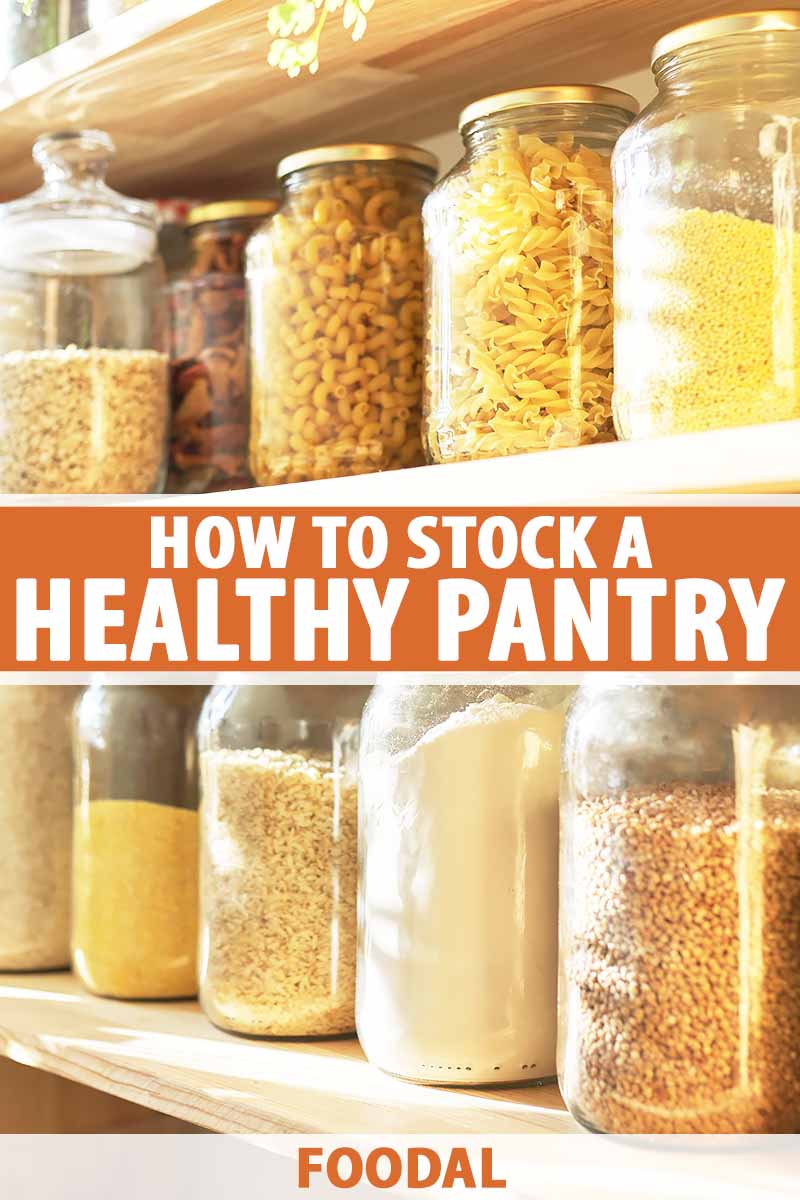
Whether you like to meal prep for the week or cook as you go, having a kitchen stocked with healthy staple ingredients makes cooking healthy recipes so much easier.
This how-to guide will give you tips for stocking your pantry, plus our ultimate list of foods to have on hand.
What You’ll Learn
Why Keep Your Pantry Stocked?
The idea of revamping your kitchen may seem like a lot of work initially, but trust me – not only is it easier than you might think, it’s also well worth the effort
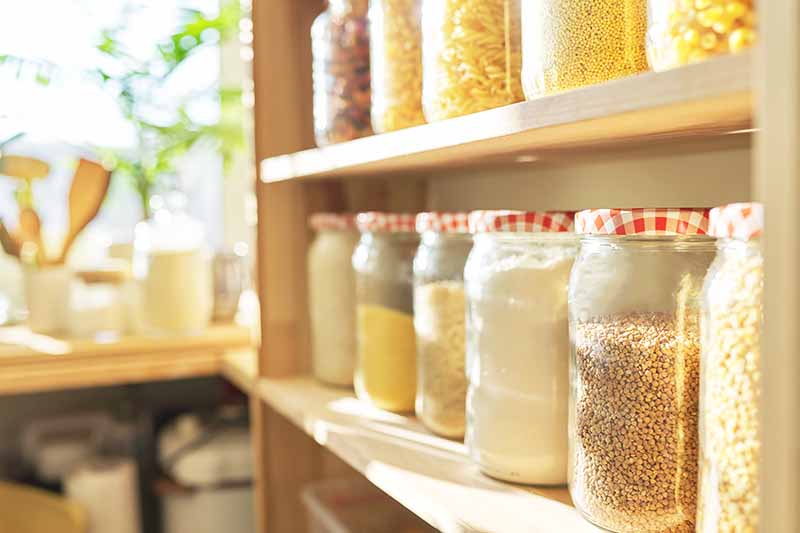
Here are five of the main benefits of keeping your pantry stocked with healthy ingredients:
1. Shortens Your Grocery List
Do you ever look at a recipe and feel overwhelmed by the number of ingredients you’d need to buy to make it? By keeping a few essential ingredients on hand at home, especially spices and herbs, those new and lengthy recipes will often start to seem much more doable.
2. Helps with Meal Planning
When you’re trying to decide what to make for dinner on a given night or for the week, a great place to start is your pantry. By looking through your cabinets, fridge, and freezer, you can start to get an idea of what you already have on hand, and potential recipes to use these items in.

For example, if you already have light coconut milk, curry powder, brown rice, and frozen mixed vegetables, then you can easily make a simple curry by picking up just a few ingredients like chicken or tofu from the store.
3. Perfect for Last-Minute Meals
We all have those nights when we get home late and don’t have time to run to the grocery store for dinner. Instead of ordering takeout, rummage through your kitchen for ingredients that you can easily combine for a simple meal.
One of my go-to’s is a simple burrito bowl, as I always have beans, rice, frozen vegetables, cheese, and salsa on hand. Brown fried rice and shakshuka (eggs poached in tomato sauce) are also common dinners at my house.
4. Encourages Healthier Snacking
When it comes to snacking, most of us don’t go to the grocery store when we’re feeling hungry. Instead, we reach for whatever is already in our kitchen. Keeping staples like fruit, cheese, and nuts on hand makes it easier to make healthy choices.
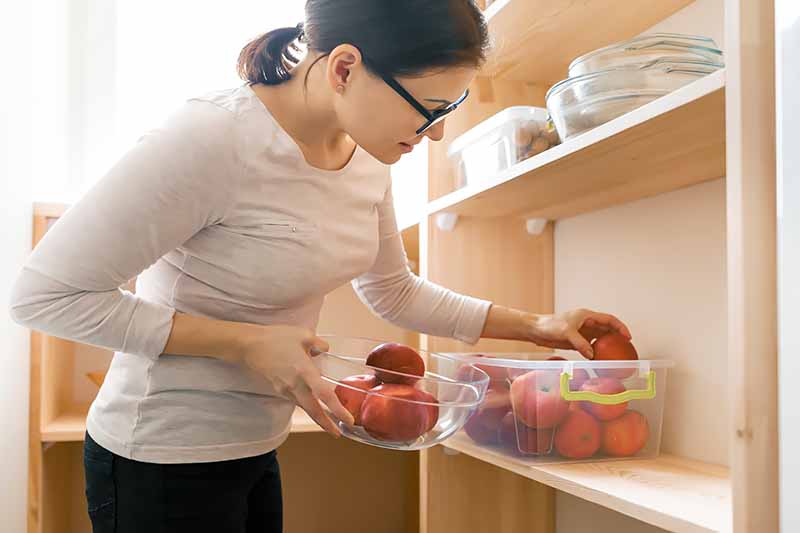
Of course, you can also expand this list to include your favorite go-to healthy snacks that aren’t already included, such as hummus or popcorn.
5. Saves You Money
While there is the initial investment of getting your kitchen stocked, over time it can actually save you money.
One way it can help is by buying staple items when they go on sale and buying in bulk. After all, now that you have a list of which foods you want to keep on hand, you’ll be more aware of when they go on sale.
Just be sure that you’re storing these items correctly to avoid spoilage before you get a chance to actually use them!
Another way it can help out your bank account is by reducing how often you end up going out to eat. By making meal planning easier and having foods that can be easily combined into a simple meal, you’ll have fewer excuses to order take-out at night.
Return to the Table of Contents
How Maintain a Healthy Pantry
Now that I’ve presented the reasons why it’s beneficial to have healthy foods on hand, let’s focus on how to keep and store these products!

Here are a few of my top tips for creating and maintaining a healthy pantry:
1. Get Organized!
I like to keep similar foods stored together, such as grains, canned beans, oil, and spices. This makes it easier to quickly scan and keep a tally of what you do and do not have.
2. Invest in Clear Plastic or Glass Containers
Clear, airtight containers are great to have on hand for storing dry goods, like flour, grains, pasta, and dried beans. Not only do they make it easier to actually see what’s in your pantry, they also help to keep your food fresh for longer periods.
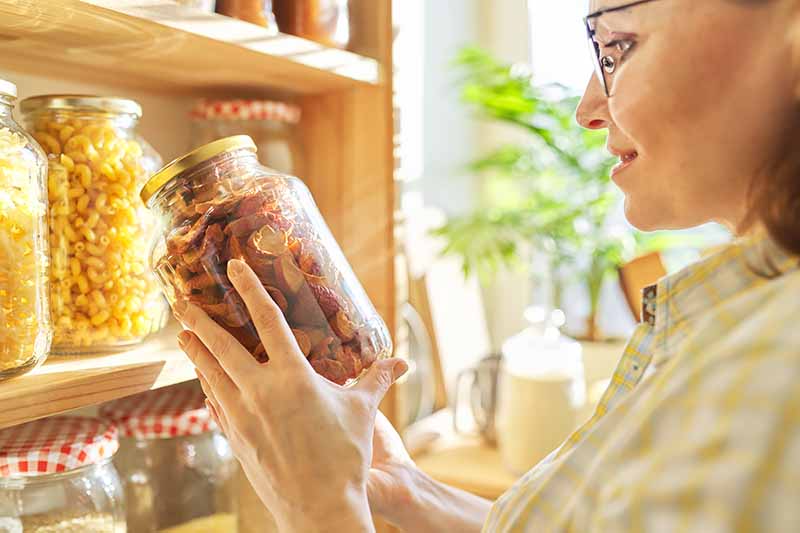
If you like to buy in bulk, oxygen-absorbing packets and a vacuum sealer can also come in handy.
3. Store Food Properly
For health and quality reasons, make sure you’re storing your foods properly.
For example, oil should be kept in a cool, dark place to extend shelf life and keep it from going rancid. Don’t store your olive oil in a cabinet that gets warm from being next to or above your stove.
Flour (especially alternative flours like coconut or almond, as well as those made with whole grains), nuts, and seeds are foods that are okay stored in the pantry for several weeks, or even months. But for longer term storage, you may want to move them to the freezer.
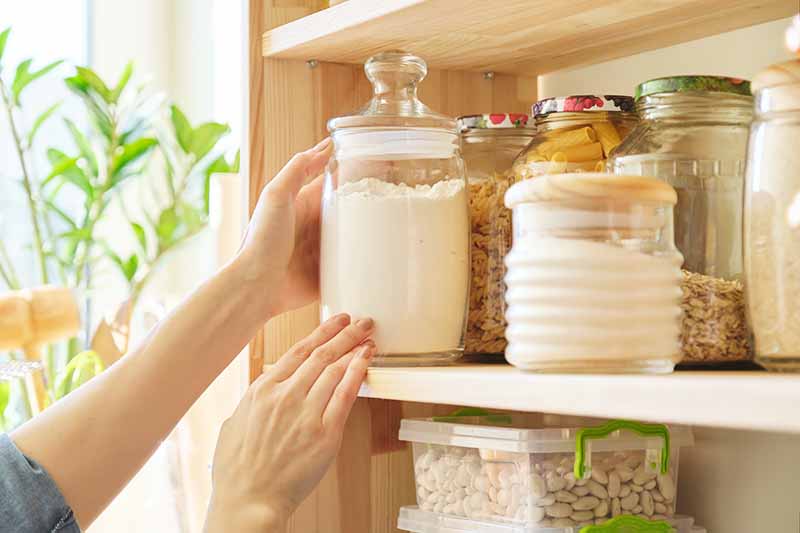
You’ll also want to make sure anything in your freezer is stored in a freezer bag or airtight container, to avoid freezer burn.
Finally, follow the rule of “first in, first out,” aka FIFO in professional kitchens. This means newer items should be placed behind older ones, making it easier to use up older products before they expire. This is especially helpful if you plan to buy items in bulk.
4. Keep an Eye on Your Pantry Inventory
When you notice you’re getting low on certain items, try to make a note on your grocery list or phone right away, so you don’t forget.

To save money, I also recommend either making or canning your own favorite ingredients and basics like condiments, or buying these staples in bulk whenever they go on sale, as long as you have the storage space for them.
5. Do Some Spring Cleaning
Once a year (and it doesn’t have to be in the spring), go through and clean out your cabinets, drawers, fridge, and freezer. While meal planning can help to reduce food waste, you may still find some ingredients that have expired.
This is also a good way to take note of which items need to be used up soon, before they go bad.
Return to the Table of Contents
Foodal’s Ultimate List of Healthy Pantry Staples
This list is a great starting point for growing your healthy pantry.

Of course, depending on the types of cuisine you cook most often, there may be a few items to add to this list. For example, if you love Asian-inspired meals, miso paste and fish sauce would make sense to add to your arsenal of staples.
Grains and Legumes
- Brown rice
- Dried lentils
- Dried beans
- Quinoa
- Rolled oats
- Whole grains like farro or barley
- Whole wheat pasta
- Whole wheat breadcrumbs
Nuts, Seeds, and Dried Fruit
- Almonds
- Assorted dried fruits, such as dates, figs, blueberries, raisins, cranberries, apricots
- Cashews
- Chia seeds
- Flax seeds (whole or ground)
- Natural peanut butter or almond butter
- Sesame seeds
- Walnuts
Note: unopened packages of nuts can keep for up to 6 months past their best-by dates when stored in a cool, dry place. For long term storage, you can store nuts in the freezer for up to two years. Before eating, always make sure to check that the nuts haven’t gone rancid by smelling them first. Rancid nuts will have an unpleasant, rotten odor.
Baking Ingredients and Sweeteners
- All-purpose flour
- Baking powder
- Baking soda
- Brown sugar
- Cornstarch
- Dark chocolate (for baking and snacking)
- Granulated or cane sugar
- Honey
- Pure maple syrup
- Unsweetened cocoa powder
- Vanilla extract
- Yeast (if you make homemade bread)
- White whole wheat flour
Note: once opened, pure maple syrup should be stored in the fridge.
Oil, Vinegar, and Sauces
- Avocado or canola oil
- Apple cider vinegar
- Balsamic vinegar
- Barbecue sauce (without high fructose corn syrup)
- Dijon mustard
- Extra-virgin olive oil
- Hot sauce
- Low-sodium soy sauce
- Rice vinegar
- Salsa
- White distilled vinegar
- Worcestershire sauce
Note: make sure to read labels, as many sauces should be refrigerated after opening.
Canned Goods
- Canned beans without added salt: chickpeas, black beans, pinto beans, cannellini beans
- Diced tomatoes
- Tomato paste
- Pasta sauce (look for brands low in added sugar and free of high fructose corn syrup)
- Light coconut milk
- Low-sodium chicken and vegetable broth
- Whole tomatoes
Spices and Dried Herbs
- Dried herbs: basil, bay leaves, oregano, rosemary, sage, tarragon, thyme
- Fresh ginger (store in the freezer for longer shelf life)
- Fresh garlic
- Ground spices: black pepper, chili powder, cumin, curry powder, garlic powder, ginger, paprika, cayenne pepper, turmeric
- Red pepper flakes
- Salt
- Whole spices: black pepper, cinnamon sticks, nutmeg, allspice berries, cloves, cardamom
Find a complete list of herbs and spices here.
Citrus and Seasonal Fresh Fruit
The following fruits are best kept on your counter rather than in the fridge:
Fruits like apples, peaches, pears, and kiwis can be stored either on the counter or in the fridge.
Bonus Fridge Ingredients
- Butter
- Eggs
- Good quality hard cheese, such as Asiago, Parmesan, or Romano
- Milk or dairy-free milk alternative
- Mini cheese wheels or cheese sticks for snacks
- Plain Greek yogurt
- Tofu packed in water
Bonus Freezer Ingredients
- Fish fillets, such as halibut and salmon
- Frozen berries
- Frozen vegetables: bell peppers, broccoli, carrots, cauliflower, corn, spinach
- Frozen 93% lean ground turkey
- Whole grain sandwich bread
Return to the Table of Contents
Stocked Up and Ready to Prepare Simple Family Recipes
Whether you stock your pantry on a single trip to the store or slowly build up your inventory, once you finally have these healthy ingredients on hand, you’ll be surprised by how many recipes you’re able to make using just these staple foods!
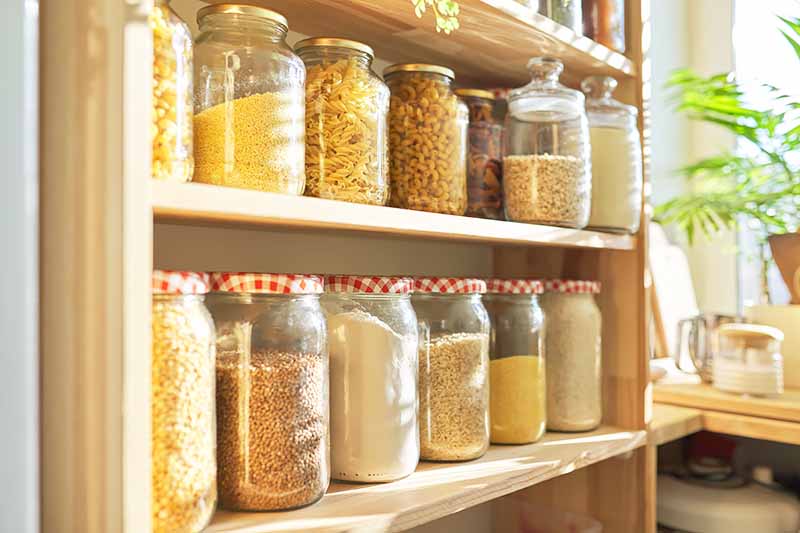
Ready to adopt a healthier diet? Is your pantry stocked, and you’re ready to cook? Here are a few simple and healthy recipes from Foodal to get you started:
Did we miss something? Let us know what ingredients you always have on hand in the comments below! And don’t forget to share this article with others who are looking to up their healthy eating game.
Uncredited photos: Shutterstock. Originally published on August 31, 2012. Last updated April 21, 2020.
About Kelli McGrane, MS, RD
Kelli McGrane is a Denver-based registered dietitian with a lifelong love of food. She holds undergraduate and master’s degrees in nutrition science from Boston University. As a registered dietitian, she believes in the importance of food to nourish not only your body, but your soul as well. Nutrition is very personal, and you won’t find any food rules here, other than to simply enjoy what you eat.





I really appreciate this post so I read it again and again because this post is very helpful and
Attractive for kitchen lovers.
pantry items stored without pantry